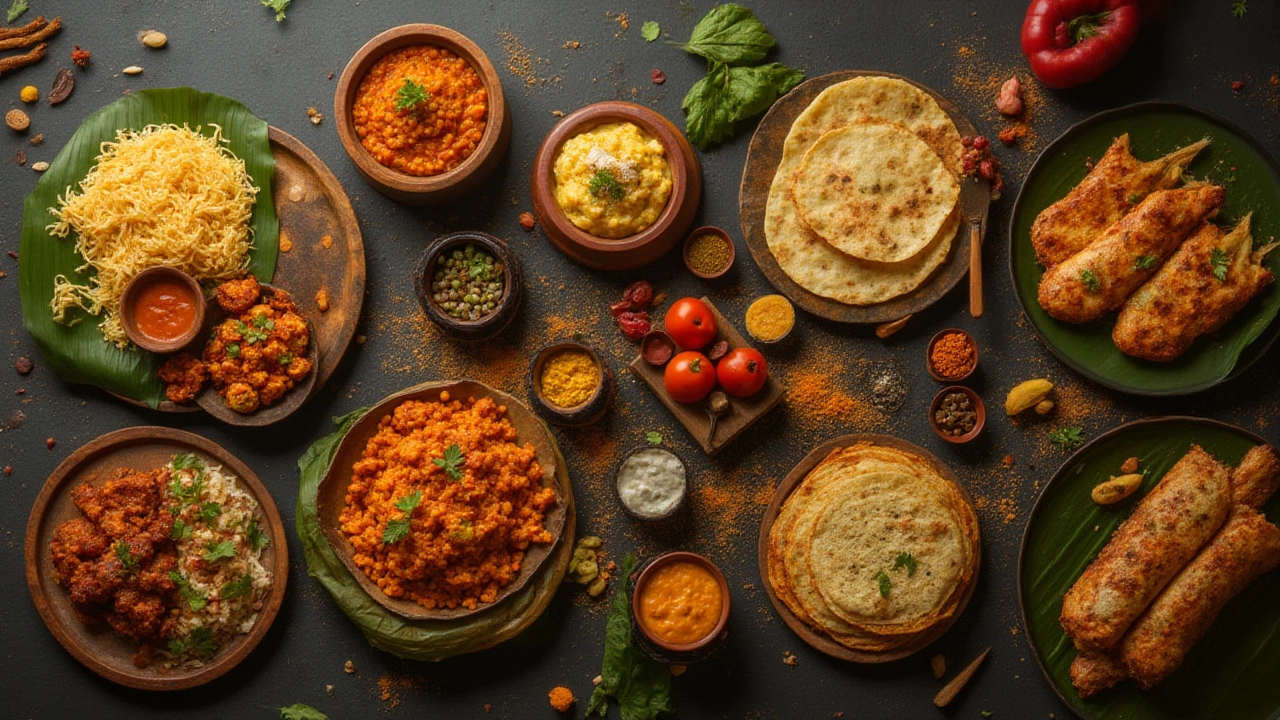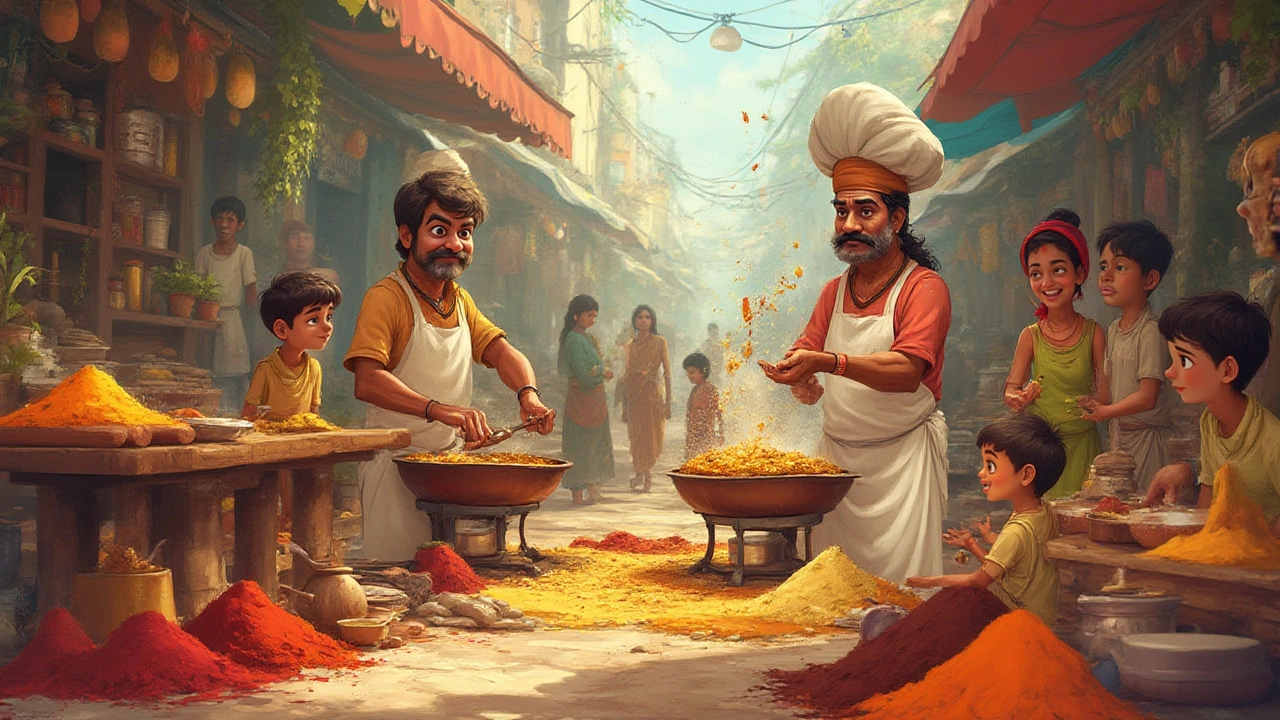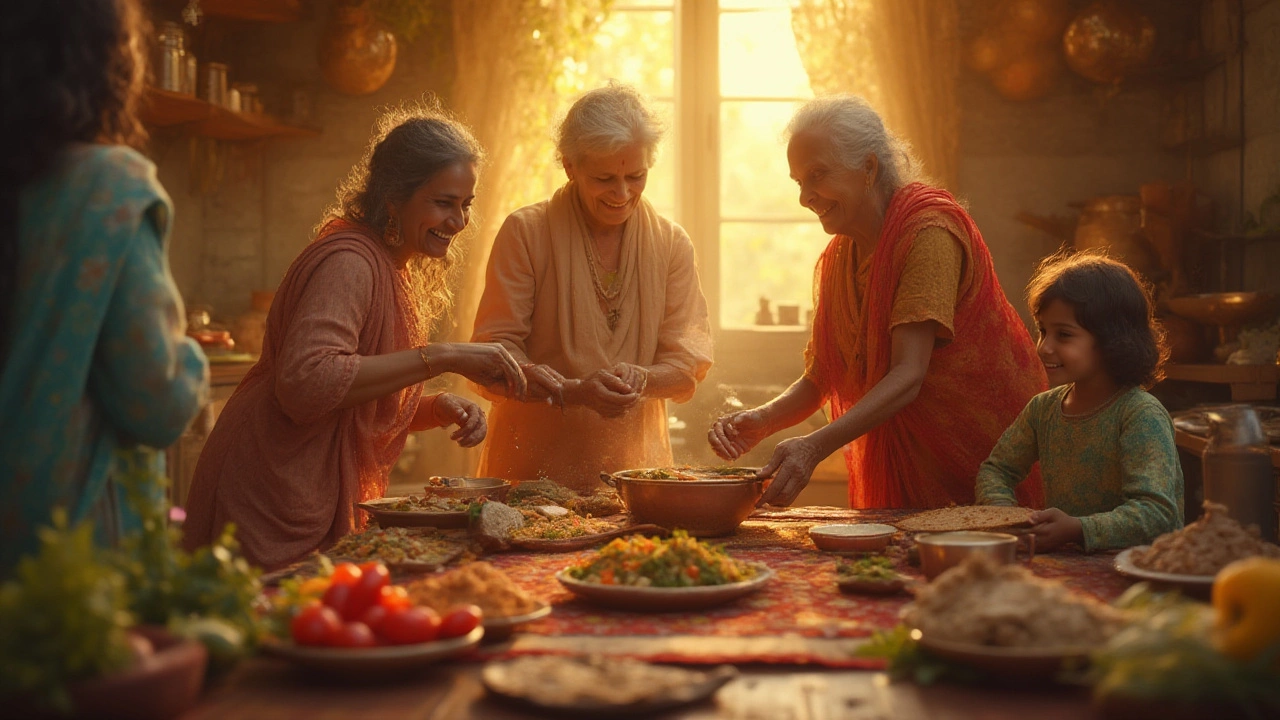Who decides what the nicest Indian dish is? Street vendors in Delhi pile up crispy samosas for a hungry crowd, while in Kerala, families stir aromatic coconut curries that never leave their recipe books. Walk into any Indian home or local eatery and toss out the question—'What’s the best Indian dish?'—and be ready for passionate debates, strong opinions, and sometimes, outright argument. Some people swear by the buttery, tomato-rich charm of butter chicken; others light up at the first scent of masala dosa on a hot tawa. Food in India isn’t just about satisfying hunger—it’s everyone’s favorite conversation starter, a culinary journey loaded with history, tradition, and a lot of spice. If you think you know what’s best, I promise you, there’s always another dish out there waiting to rock your world. Let’s dig right into this flavor-packed quest; you might be surprised at how much more there is to Indian food than chicken tikka masala.
The Magic Behind Indian Cuisine: What Makes a Dish ‘Nicest’?
Nailing down the nicest Indian dish is a bit like choosing a favorite song from an endless playlist—they’re all hits depending on your mood. Indian food is an explosion of flavors born from centuries of trade, migration, and ingenuity. Ever wonder why your mouth tingles after a bite of Goan vindaloo? Blame—or thank—the Portuguese. Or why Kashmiri rogan josh looks different from the Punjabi version? It’s a tale of mountains, migration, and climate. The places where dishes are created twist recipes with local spices, ancient cooking methods, and secrets passed down for generations. How about the way mustard oil’s smokiness winds up in Bengali fish curries, or how a dusting of black salt brings chaat to life on Mumbai’s bustling streets?
Every region brings its own lineup. North India loves its creamy, spice-rich curries—think paneer butter masala and dal makhani—while the South dazzles with fermented rice-and-dal batters, steaming idlis, and crunchy dosas packed with potato masala. Western India cooks up punchy, tangy flavors; the East swings between the fiery (Nagaland’s pork with bamboo shoot) and the delicate (West Bengal’s shorshe ilish, or mustard-laden hilsa fish). Even within the same city, the nicest dish can jump from plates of pav bhaji at a hole-in-the-wall joint to a perfectly grilled seekh kebab at a decades-old eatery.
So, what actually makes a dish the nicest? Is it popularity? Comfort? Celebrity status? Or is it those intangible things—a whiff of nostalgia, a memory of grandma cooking, the taste that brings you back to life after a long trip? The magic sits somewhere at the intersection of all these things—and it explains why Indians can eat the same dal every day and still call it their soul food. Keep that in mind as we go dish-hunting across India’s wild, vast foodscape.
The Iconic Stars: From Butter Chicken to Masala Dosa
If you stopped ten people on the street and asked about the best Indian dish, two names would probably pop out: butter chicken and masala dosa. Both come from opposite sides of the country, both have reached legendary status, and both are totally different experiences. Butter chicken—aka murgh makhani—was invented in Delhi in the 1940s almost by accident. Chefs at a restaurant called Moti Mahal mixed leftover tandoori chicken with a creamy tomato sauce and a generous dose of butter, and the rest is flavor history. What makes it the superstar? It’s rich, indulgent, and works with everything, from naan to rice to just a hungry finger swiped in the gravy.
On the flip side, you can’t visit South India without someone handing you a piping hot masala dosa. Thin, crispy, golden, and filled with spiced mashed potatoes, this dish is a breakfast legend—though honestly, no one would judge you for eating it three times a day. The magic here lies in the fermented batter, the contrast between crunchy dosa and soft potato filling, and that tangy coconut chutney and hot sambar on the side. Everyone has a favorite dosa joint—just like everyone argues about which makes the best butter chicken.
But the nice list doesn’t end there. Don’t skip over biryani, which claims fans from Hyderabad to Kolkata. Each city bakes its own twist into this layered rice-and-meat (or veggie!) feast, whether with fried onions and saffron, or boiled eggs hiding under every fluffy bite. Then there’s chaat, North India’s most fun street food—think crunchy puris stuffed with spiced potatoes, a dash of sweet tamarind chutney, and a sprinkle of pomegranate seeds. Or rajma chawal, a simple combo of kidney beans stewed for hours, poured over steamed rice—a staple in every North Indian home.
Tip: To pick your favorite, don’t judge by the looks or the fame. Sometimes the nicest dish is the less flashy one, like a bowl of homemade kadhi, or the perfect flaky paratha dripping with ghee.

Hidden Gems: Regional Dishes You Need to Try
Everyone knows butter chicken, but what about Laal Maas? In Rajasthan’s desert landscape, this fiery mutton curry is a badge of honor, cooked with Mathania chilies that turn the dish a deep red and a flavor bomb for anyone craving heat. Or maybe you’ve never stumbled upon appam with stew in Kerala, where lacy, soft rice pancakes are dipped in a mild, coconutty broth that calms even the hottest day. Move east, and you’ll hear locals rave about Assamese duck curry—imagine duck slow-cooked with ash gourd and robust spices, as hearty as it sounds.
In Gujarat, undhiyu is a winner: a winter-only feast where root veggies, beans, and fenugreek dumplings are sealed in a pot and slow-cooked underground, letting all the flavors marry in one magical bite. Try Bengali puchka and you’ll get why locals line up for hours: it’s the crunchiest, spiciest, most mouth-puckering version of pani puri you’ll ever try. Don’t even get me started on Naga pork with bamboo shoot—smoky, rich, and nothing like you’ll taste anywhere else.
The real trick to finding these dishes is this: ask a local, eat where families go, not just tourists. Most gems aren’t on fancy restaurant menus. One cool fact? The ‘nicest’ dish in one state can be totally unknown just half a day’s drive away. Food is super local here; that’s why every trip you take in India adds new entries to your food-favorite list.
- Best Indian dish to try if you’re in Punjab: sarson da saag with makki di roti—spicy, mustardy greens with unleavened corn bread.
- In Goa, vindaloo isn’t always the mouth-scorcher you fear—it can be tangy and mild too, especially if you try the home recipes over restaurant ones.
- Kerala’s fish molee, light and fragrant, is the perfect intro to the region’s cuisine if you’re shy about spice levels.
Fun food fact: The world’s hottest chili, the Bhut Jolokia or “ghost pepper,” comes from Northeast India, and it’s used in all sorts of local dishes to add a kick like no other.
Vegetarian Delights: More Than Just Paneer
Indian food earned its veggie cred long before plant-based became cool in the West. According to the Food and Agriculture Organization, about 38% of Indians are lifelong vegetarians. That’s millions of people demanding big flavor without any meat. Paneer tikka, dal tadka, and chole bhature get all the Instagram love, sure, but you won’t believe the variety vegetarians can enjoy across different regions.
Ever tried Gujarati thali? It’s not a dish—it’s an experience. Picture a steel tray groaning under little bowls of khandvi, sweet dal, crispy puris, tangy pickles, and endless refills until you say ‘enough’. In southern India, fluffy medu vadas (deep-fried lentil donuts) and sambar team up for the world’s best breakfast. Travel to Rajasthan and you’ll find dal baati churma—a combo of baked wheat balls, buttery dal, and sweet crumbly wheat dessert. Even street food can be fully veg: samosas, aloo tikki, pav bhaji... the list just does not end.
Tip if you want to get local: Check out the sabziwala stalls (vegetable vendors) in the mornings—fresh, glistening veggies are the heart of every Indian kitchen. And don’t fear the spice. Spicy doesn’t always mean ‘hurt your mouth’—it’s about depth of flavor. Ask for medium spice if you’re not sure, and always, always say yes to extra chutney.

Tips for Finding Your Favorite and Cooking at Home
The only real way to crown your nicest Indian dish is to eat your way through as many as possible. But let’s be honest, most of us can’t book a ticket every time we want good food. Don’t sweat it—resources for cooking real Indian food at home have never been better. Look up YouTube channels like “Hebbars Kitchen” for simple, step-by-step videos that demystify even the trickiest of curries. If you’re near an Indian grocery, stock up on spice basics: cumin, coriander, turmeric, garam masala, mustard seed, and dried chilies. These easy buys can transform your regular chicken, veggies, or paneer into pure gold.
Here’s a formidably useful tip: Indian food loves freshness. Onion, ginger, and garlic pastes set up most dishes. But don’t drown everything in cream—sometimes water is the secret to drawing flavors out. Ghee (clarified butter) is a flavor booster but so is mustard oil. Marinate proteins ahead if you want deep flavors—yogurt, lemon, and spices help tenderize and spark up taste. And if you mess up? That’s part of the fun. Even imperfect Indian meals taste pretty great with a scoop of plain yogurt and some pickles on the side.
Stuck for inspiration? Try starting with dal (lentils) and a simple tadka (tempered spices in hot oil poured over cooked dal). The base is humble, but you can go pro with toppings: fried onions, fresh coriander, or a squeeze of lime. Or whip up chana masala—chickpeas spiced with garam masala and tomato—served with store-bought naan or homemade rice. Even street-style chaat can happen at home with boiled potatoes, crunchy sev (fried chickpea noodles), and bottled mint and tamarind chutneys.
Don’t forget about sweets for the grand finish. There’s nothing quite like ending your meal with gulab jamun (deep-fried dough balls soaked in cardamom syrup), or homemade kheer (rice pudding). Ask around; every family has a special dessert they swear by—sometimes the simplest wins hearts.
So, what’s the nicest Indian dish? The only right answer is your own—after you’ve tasted enough, argued enough, and maybe cooked for friends. Because, in true Indian style, food here is for sharing. If you think otherwise, you probably haven’t had a hand-stretched roti straight off the stove. Trust me: It’ll change your mind.
